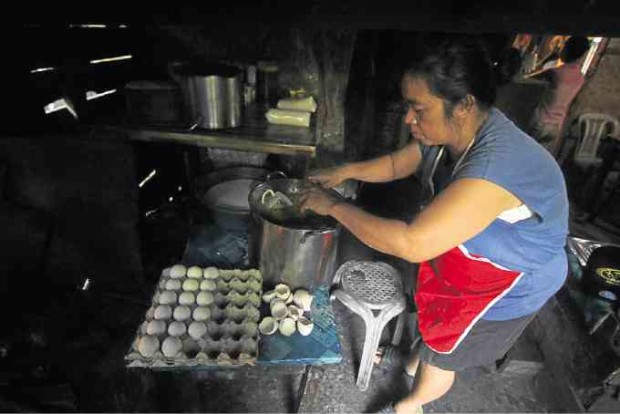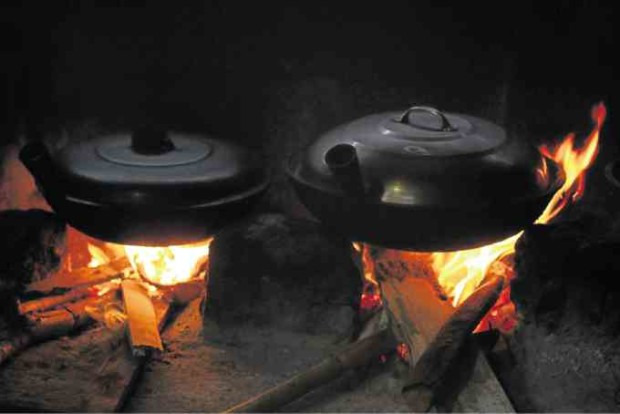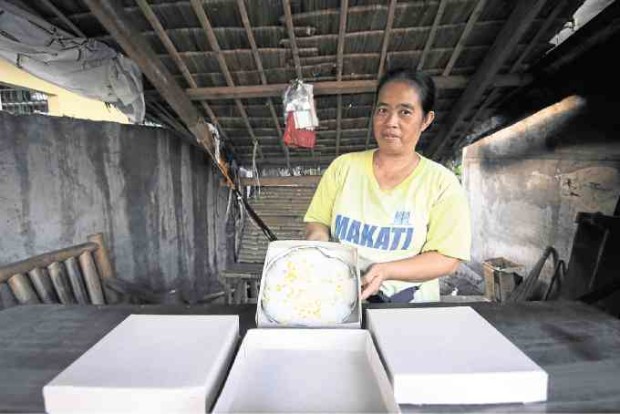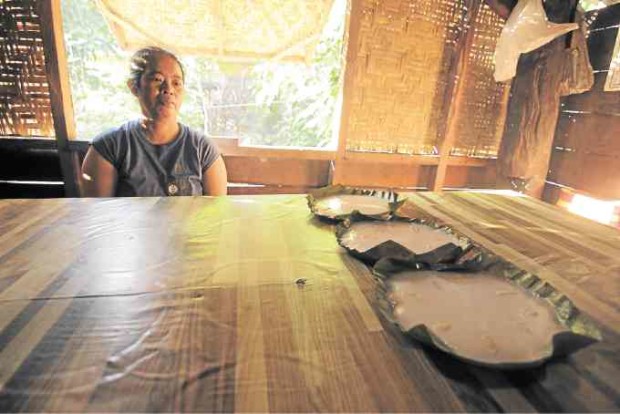A little-known treat called ‘timitim’
GUBAT, Sorsogon—To the Salvan family, every day starts at 2 a.m. at their shop with the meticulous grating and extracting of cassava or “kamoteng kahoy” to make the base of this town’s little-known treat “timitim.”
The delicacy’s name is derived from “patikim-tikim” (tasting), said Grace Salvan, who has been selling the food for 10 years now.
Salvan is the only vendor left who makes and sells the delicacy daily, save Sunday. Two other vendors only prepare it when they get orders, she said.
Cassava is grated and its milk extracted in the same way a coconut undergoes the process to get coconut milk.
Some of the coconut milk will be mixed with brown sugar, milk and eggs to be layered over the cassava. Some will be turned into “latik” (coconut milk curd) to be sprinkled on top of the native cake.
Article continues after this advertisementThe mixture is placed in a circular mold with a mat of banana leaf steamed for about 15 minutes. The latik layer is added with toppings—pili nuts, sweet cheese (mix of cheese and corn), chocolate, peanuts or “buko pandan”—and then steamed again.
“We use firewood to cook timtim because our customers know when we use LPG (liquefied petroleum gasoline) or kerosene. It doesn’t taste as good,” said Salvan’s husband, Noe.
For Gubatnons, the Salvans’ shop is the only place to go to for timitim. But there are no signs to announce its existence, making it almost impossible for tourists to find it.
Even during fiestas, timitim is not as popular as Gubat’s other products like banana. There are, however, timitim cooking contests during schools’ intramurals. “Elementary and high school students are also taught how to cook timitim,” Salvan said.
Without their income from timitim, she said her husband would not be able to finish school.
In 2013, Salvan asked her husband to enroll in the Alternative Learning System (ALS). After graduating from ALS high school in 2015, Noe took an Animal Production course at the Technical Education and Skills Development Authority in the neighboring town of Bulusan.
“I wanted to study culinary arts, but that would then require me to study while my kids go to school. Someone has to prepare the timitim,” she said.
Back then, she sold timitim per slice for a peso each outside Gubat National High School at the town center.
No one is quite sure how the tradition of timitim started in Gubat, but Salvan said a member of the Camara family introduced the delicacy in the 1970s.



